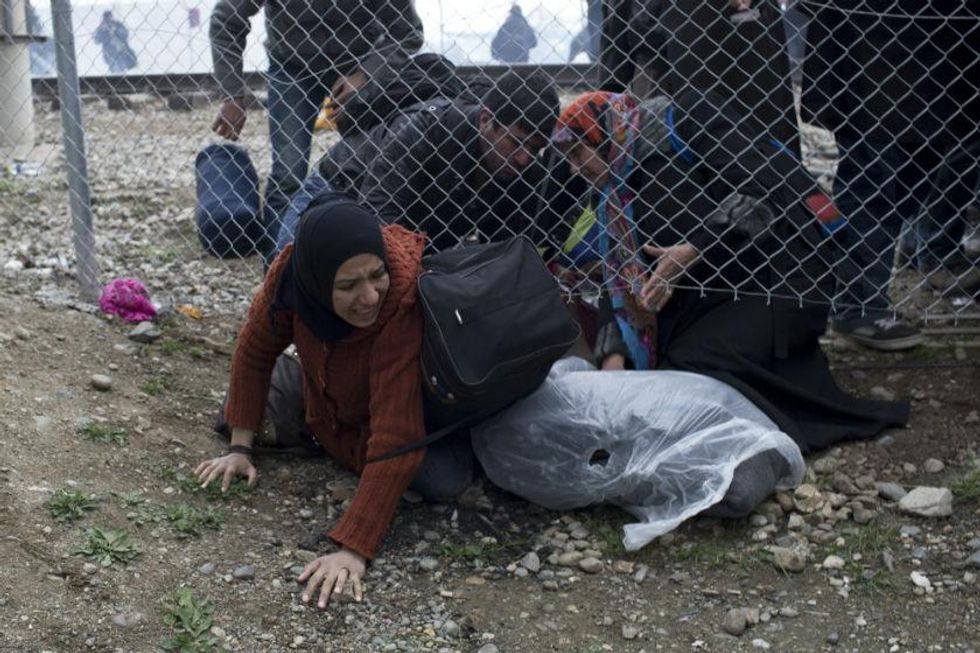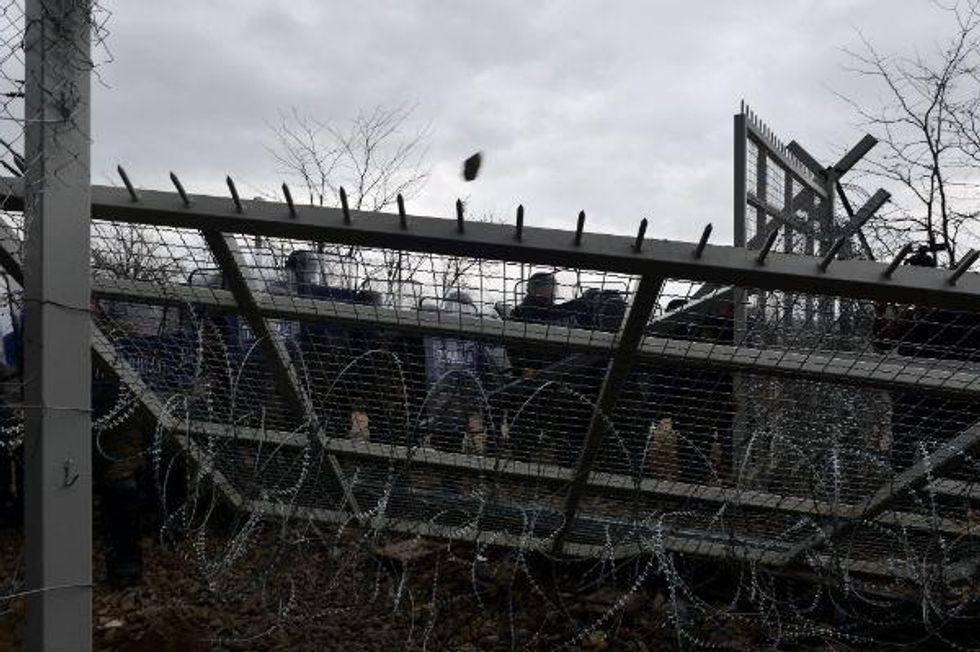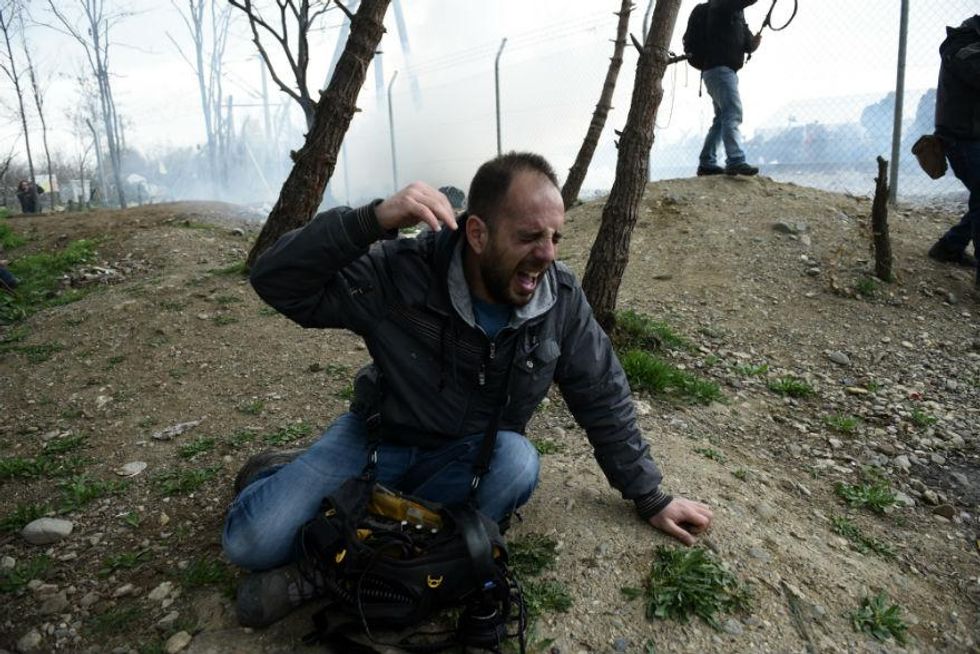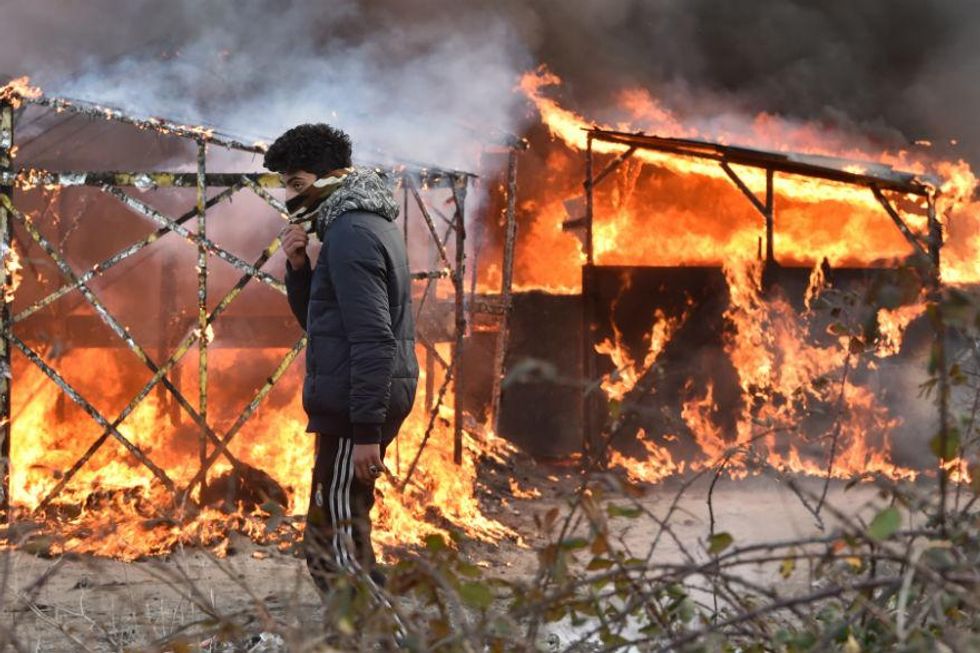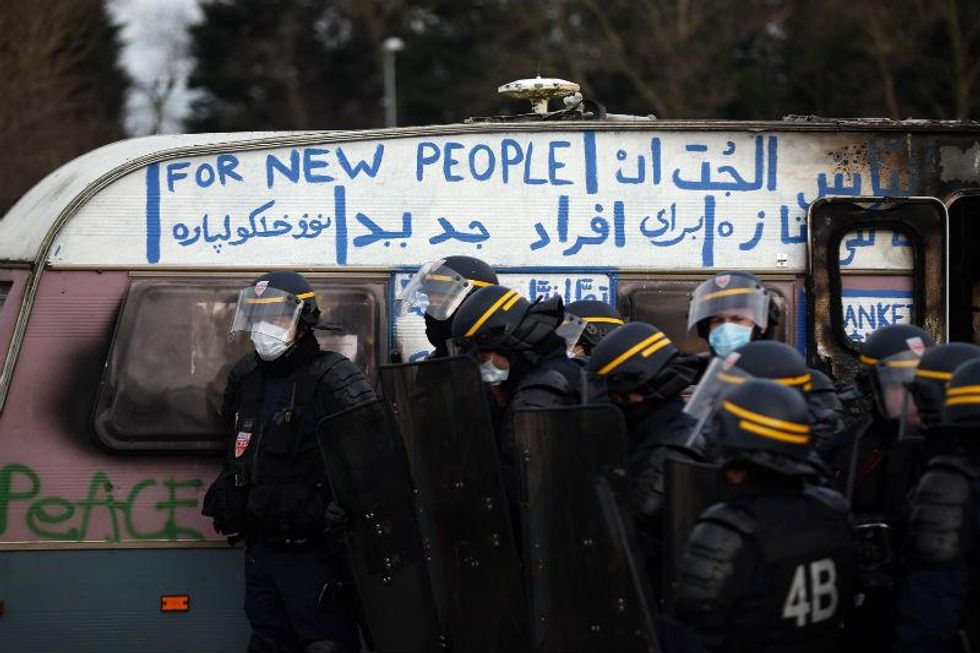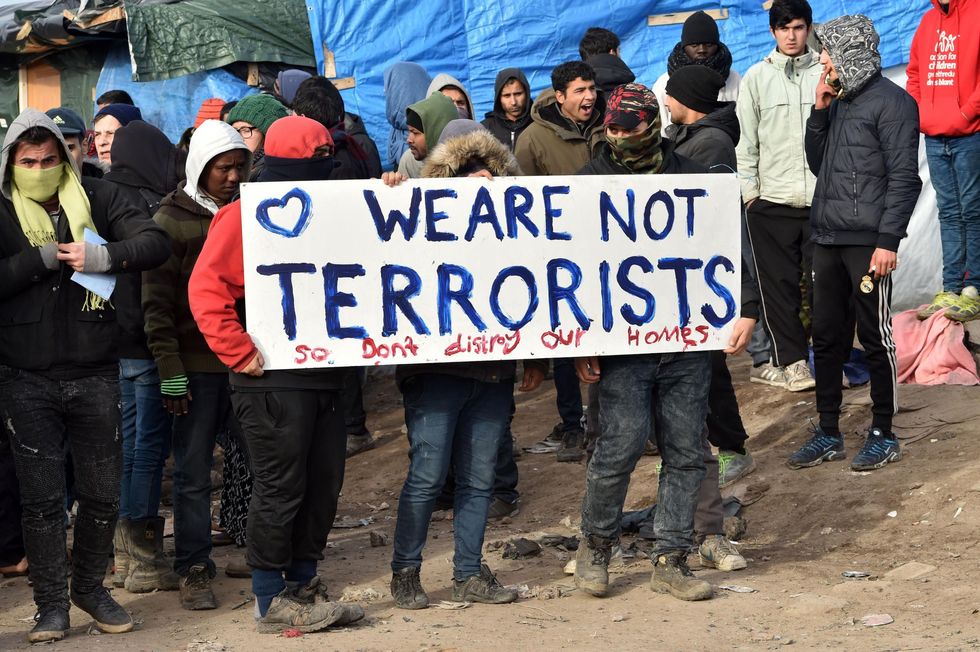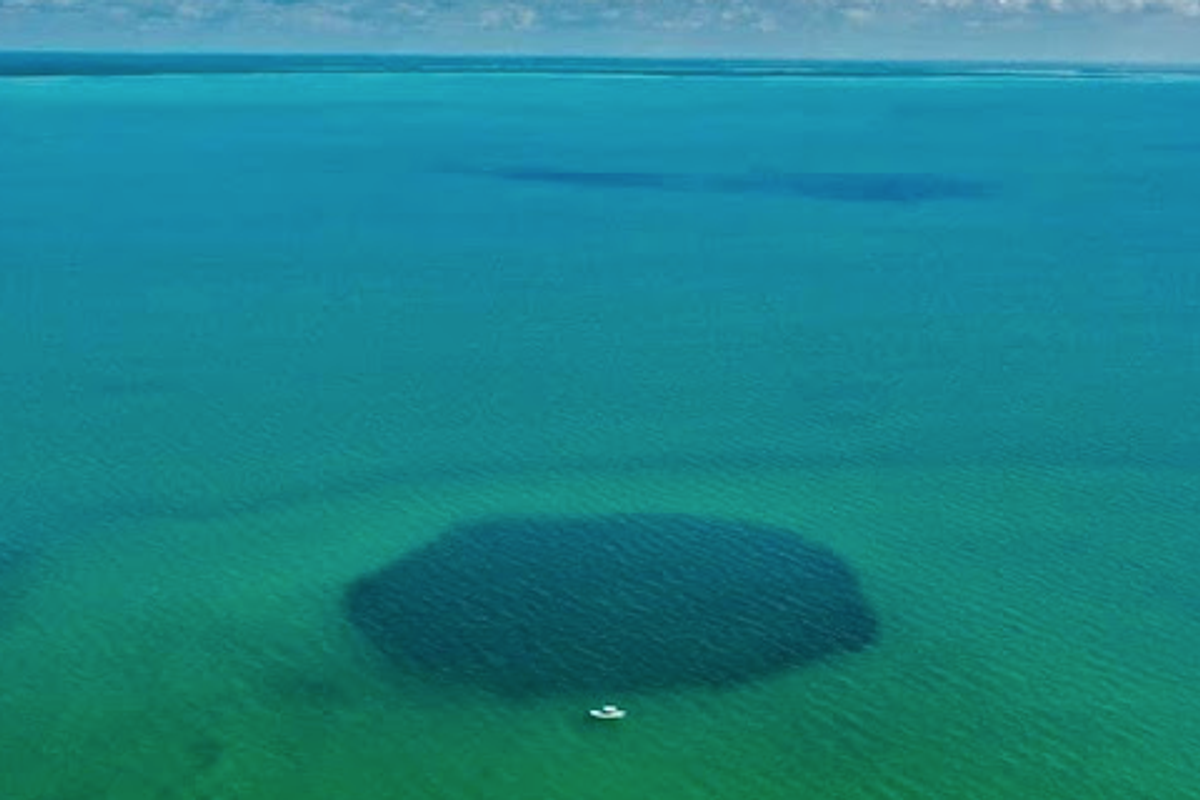News
Bethan McKernan
Mar 01, 2016
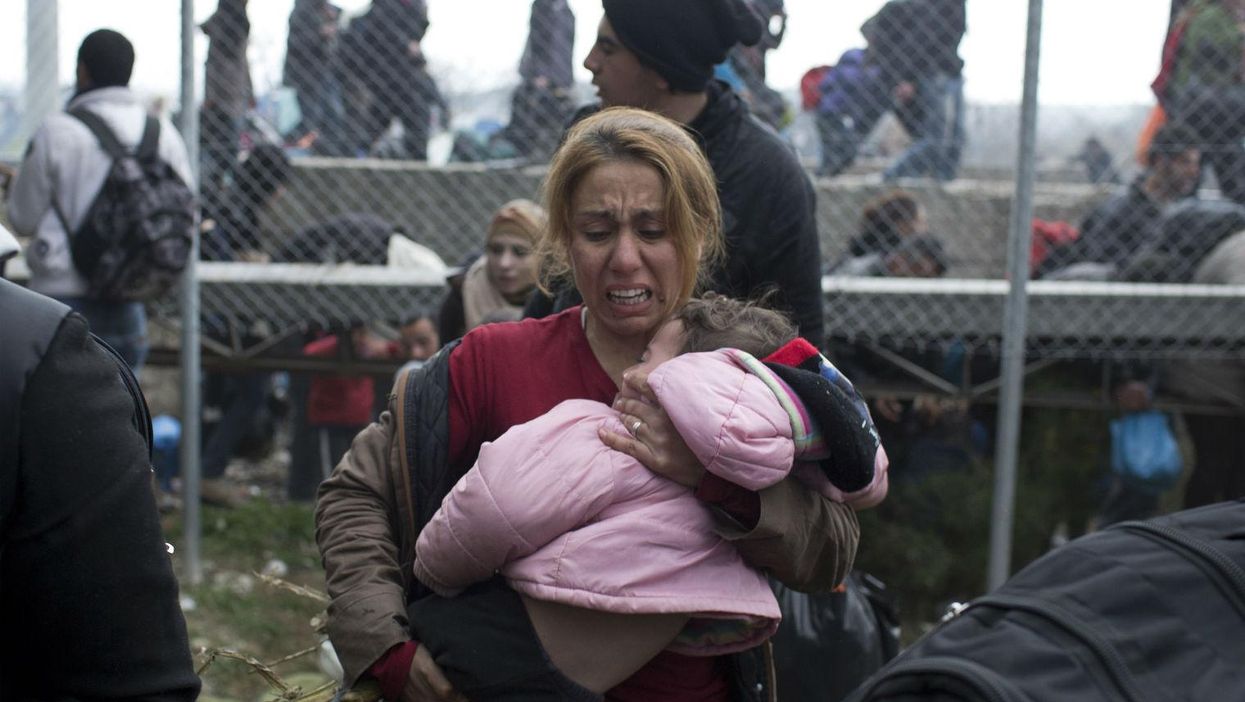
A woman holds her child as she runs away from police firing tear gas on the Greek-Macedonian border, 29th Febraury 2016. Picture: Petros Giannakouris/AP
Pictures of the destruction of the Jungle camp in Calais and teargassing of people protesting the razor-wire barrier on the Greek-Macedonian border on Monday have caused outrage around the world.
Macedonian police fired tear gas and stun grenades at around 300 men, women and children who were protesting restrictions to travel implemented on Monday when some attempted to force their way through a cordon and break down parts of the fence.
Doctors Without Borders said the youngest person they treated for coming into contact with tear gas was just six weeks old.
Around 7,000 people who are seeking asylum in Europe are thought to be stranded in Greece currently, and experts fear the number could swell to 70,000 by next month as the so-called 'refugee trail' from Greece to Berlin is closed off.
Greece's prime minister Alexis Tsipras has said the mounting crisis is turning his country into a "warehouse of souls".
Meanwhile, in Calais, demolition crews have once again returned to the Jungle camp, the slum-like home of approximately 5,000 people, to raze parts of the sprawling settlement, including people's only possessions and comforts, to the ground.
They were met with protesters overnight, some throwing stones and wielding sticks and metal bars and several makeshift buildings were set on fire.
Riot police responded with tear gas and at least four people were arrested.
French authorities have said that people will be moved to shipping containers nearby - and further away from the Channel Tunnel, where people nightly attempt to cross into UK territory - or to accommodation centres in other parts of France, but aid agencies say not nearly enough has been done to meet demand.
More: This interactive map traces how fences have gone up across Europe during the refugee crisis
More: An upsetting image of the refugee crisis has been named World Press Photo of the Year
Top 100
The Conversation (0)
